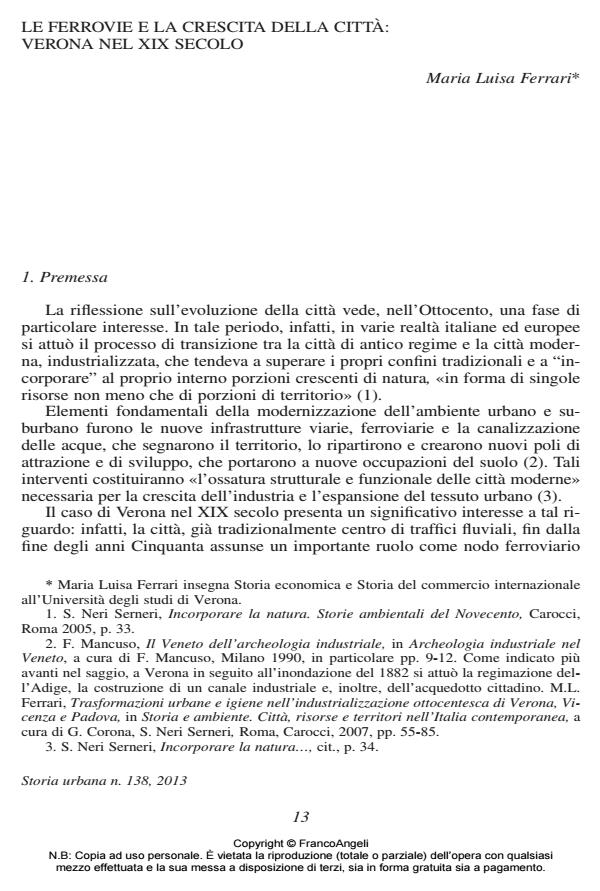Railways and urban development: Verona in the 19th century
Journal title STORIA URBANA
Author/s Maria Luisa Ferrari
Publishing Year 2013 Issue 2013/138
Language Italian Pages 21 P. 13-33 File size 1337 KB
DOI 10.3280/SU2013-138002
DOI is like a bar code for intellectual property: to have more infomation
click here
Below, you can see the article first page
If you want to buy this article in PDF format, you can do it, following the instructions to buy download credits

FrancoAngeli is member of Publishers International Linking Association, Inc (PILA), a not-for-profit association which run the CrossRef service enabling links to and from online scholarly content.
The paper intends to investigate the relationship between railway infrastructure and the city, especially focusing on the location of the stations and on their effects on the urban structure and on the development of suburban areas. The industrial growth of suburban areas was strongly affected by the presence of railway stations. The case of Verona shows two different examples of the relationship between railway infrastructures and urban development. The Porta Vescovo station, in the beginning the main one, had an immediate effect on the establishment of the first industrial factories in Verona. Only later the Porta Nuova station acquired a higher importance, because of both the short distance from the city centre and the presence of transport facilities, and the creation of an industrial area in the neighbourhoods. The case of Verona, an important railway junction, reveals a particularly significant association between the growth of the suburban area, its industrial development and railway infrastructures
Keywords: Verona Railway stations Industrialisation Urban growth
Maria Luisa Ferrari, Le ferrovie e la crescita della città: Verona nel XIX secolo in "STORIA URBANA " 138/2013, pp 13-33, DOI: 10.3280/SU2013-138002